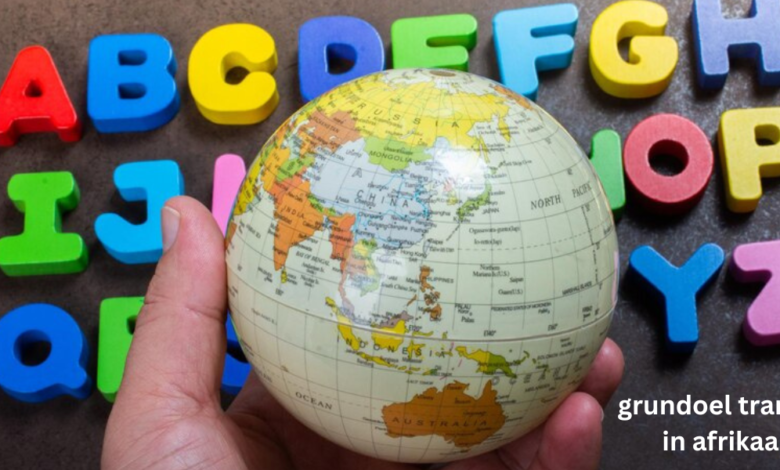Grundoel translate in afrikaans: Best Guide

The grundoel translate in afrikaans might not be familiar to many, but it holds significance in specific contexts, whether cultural, linguistic, or metaphorical. In Afrikaans, translating such terms requires a deep understanding of both the word’s origins and its intended meaning. Afrikaans, a language rooted in Dutch with influences from various cultures, is rich in expressions and idiomatic phrases. Words like Grundoel often carry a layered meaning, embodying not only a literal definition but also an emotional or contextual depth. Therefore, finding an equivalent in Afrikaans is not merely about substituting one word for another; it is about preserving the essence while ensuring that the translated version resonates with the cultural nuances of Afrikaans speakers.
The Challenges of Translating Unique Words
Translating a term like “Grundoel” into Afrikaans comes with its own set of challenges. Unique words often lack direct equivalents in other languages because they arise from specific cultural or linguistic backgrounds. For instance, “Grundoel” could be a compound word, a neologism, or a term steeped in local slang. To translate it effectively, one must first break down its components and understand its underlying concept. In Afrikaans, where many terms reflect both simplicity and poetic depth, translators often need to create phrases or compound words that mirror the original meaning. This process not only demands linguistic expertise but also creativity and an appreciation for cultural nuances. The art of translation goes beyond word-for-word substitution—it is about crafting meaning that resonates.
Afrikaans: A Language of Simplicity and Depth
Afrikaans is known for its straightforward yet evocative nature. The language, spoken by millions in South Africa and Namibia, has evolved to include words and phrases that capture the spirit of its speakers. When translating terms like “Grundoel”, it’s essential to recognize the linguistic patterns and preferences of Afrikaans. For instance, Afrikaans often simplifies complex ideas into concise phrases while retaining their emotional weight. This characteristic can make the translation process more intuitive in some cases, but it can also demand innovative solutions for words that resist simplification. Translators must balance fidelity to the original term with the natural flow and rhythm of Afrikaans, ensuring that the final result feels authentic.
Possible Approaches to Translating “Grundoel”
To translate “Grundoel” into Afrikaans, one might start by dissecting its potential components. If the term combines “ground” and “goal,” the Afrikaans equivalent could be something like “gronddoel”, reflecting a foundational purpose or objective. However, if the term carries metaphorical meanings—such as ambition, direction, or fundamental truth—additional exploration is necessary. In Afrikaans, metaphors and idioms often convey deeper meanings, so a translator might opt for an expressive phrase rather than a single word. For example, terms like “lewensdoel” (life goal) or “grondslag” (foundation) could serve as close approximations, depending on the context. Ultimately, the goal is to ensure that the translation aligns with both the literal and figurative aspects of the original word.
The Cultural Importance of Accurate Translation
Translation is not merely a linguistic exercise—it is a bridge between cultures. When translating terms like “Grundoel” into Afrikaans, it’s crucial to consider the cultural connotations and emotional undertones of the original word. Afrikaans speakers have a unique worldview shaped by their history, traditions, and environment. A well-translated term should resonate with this worldview, enhancing communication and fostering a sense of connection. Poor translations, on the other hand, can create confusion or dilute the original message. Thus, the translator’s task is not just to convert words but to carry across meanings, emotions, and cultural contexts in a way that feels seamless and natural.
Why Translation is an Art Form
Translation is often viewed as a technical skill, but in reality, it is a form of art. When dealing with unique terms like “Grundoel,” the translator must move beyond dictionaries and linguistic rules to truly capture the soul of the word. This is especially important when working with Afrikaans, a language that often conveys profound ideas through deceptively simple words. Every language carries its own rhythm, history, and emotional weight, and a good translation preserves all these elements while adapting them to a new linguistic environment. The process involves a deep understanding of both the source and target languages and a sensitivity to cultural and emotional contexts. Without this, even the most accurate translations can feel flat or out of place.
For instance, the word “Grundoel” might carry a sense of purpose or fundamental importance in English. In Afrikaans, capturing such depth may require a combination of words or a creative reimagining. The translator must decide not only how to convey the literal meaning but also how to evoke the same feelings and associations that the word inspires in its original language. This balance between precision and creativity is what elevates translation to an art form.
The Role of Context in Translation
Context is crucial in determining how a word like “Grundoel” should be translated. Words do not exist in isolation—they are shaped by the sentences, paragraphs, and even entire texts in which they appear. A term that might mean one thing in a philosophical discussion could take on a completely different meaning in a business or educational setting. In Afrikaans, as in any language, subtle shifts in tone or usage can alter the way a word is interpreted.
For example, if “Grundoel” is used to describe an overarching life purpose, the Afrikaans translation might be “lewensdoel”. However, if it refers to a fundamental principle or foundation in a technical context, “grondslag” might be more appropriate. The translator must carefully analyze the context in which the word appears and choose a translation that fits seamlessly. This is why machine translations often fall short—they lack the ability to grasp nuance and adapt to the complexities of human communication.
The Power of Afrikaans as a Descriptive Language
Afrikaans has a unique ability to convey rich meaning with relatively few words. This quality makes it particularly suited to translating terms that carry deep or complex connotations, such as “Grundoel.” For example, Afrikaans often uses compound words to express intricate ideas in a concise and elegant manner. A single term like “gronddoelwit” could encapsulate the dual ideas of foundation (grond) and goal (doelwit), offering a translation that is both accurate and evocative.
This descriptive power also allows Afrikaans to adapt to new words and concepts, integrating them into its vocabulary with ease. Translators working into Afrikaans have the advantage of being able to draw on this flexibility to create terms that feel natural and intuitive to native speakers. By combining existing words or drawing on cultural references, they can craft translations that resonate deeply, even when dealing with abstract or unfamiliar concepts.

Examples of Translating Complex Terms
The process of translating “Grundoel” can be better understood by examining similar examples. Consider the English word “milestone,” which can refer to both a literal marker and a significant achievement. In Afrikaans, this might be translated as “mylpaal,” a word that captures both meanings with precision. Similarly, a term like “framework” could be translated as “raamwerk,” preserving its structural connotations while adapting it to Afrikaans linguistic patterns.
For “Grundoel,” the translator might explore options like “basiese doelwit” (basic goal), “fundamentele grondslag” (fundamental foundation), or even “lewensgrondslag” (life foundation), depending on the context. Each of these translations offers a slightly different shade of meaning, and the choice would depend on the nuances of the original text. These examples illustrate how translation is not just about finding equivalents but about making thoughtful choices that enhance understanding.
Final Thoughts on Translating “Grundoel” into Afrikaans
The translation of “Grundoel” is a journey into the heart of linguistic and cultural expression. Afrikaans, with its rich vocabulary and evocative nature, offers a wealth of possibilities for capturing the essence of this term. Whether the focus is on its literal meaning, its metaphorical significance, or its emotional impact, the key is to approach the task with care and creativity. Every word carries a world of meaning, and translating it into another language is an opportunity to build bridges, foster understanding, and celebrate the beauty of linguistic diversity.
In the end, the process of translating “Grundoel” is a testament to the power of language to connect people across cultures. It reminds us that words are not just tools for communication—they are vessels of meaning, history, and emotion. By embracing the challenges and opportunities of translation, we can ensure that the richness of one language is preserved and shared in another.



